Their trip to Bali was going to be a month long. But they fell in love with the island and built a house near the sea, giving up city life for good.
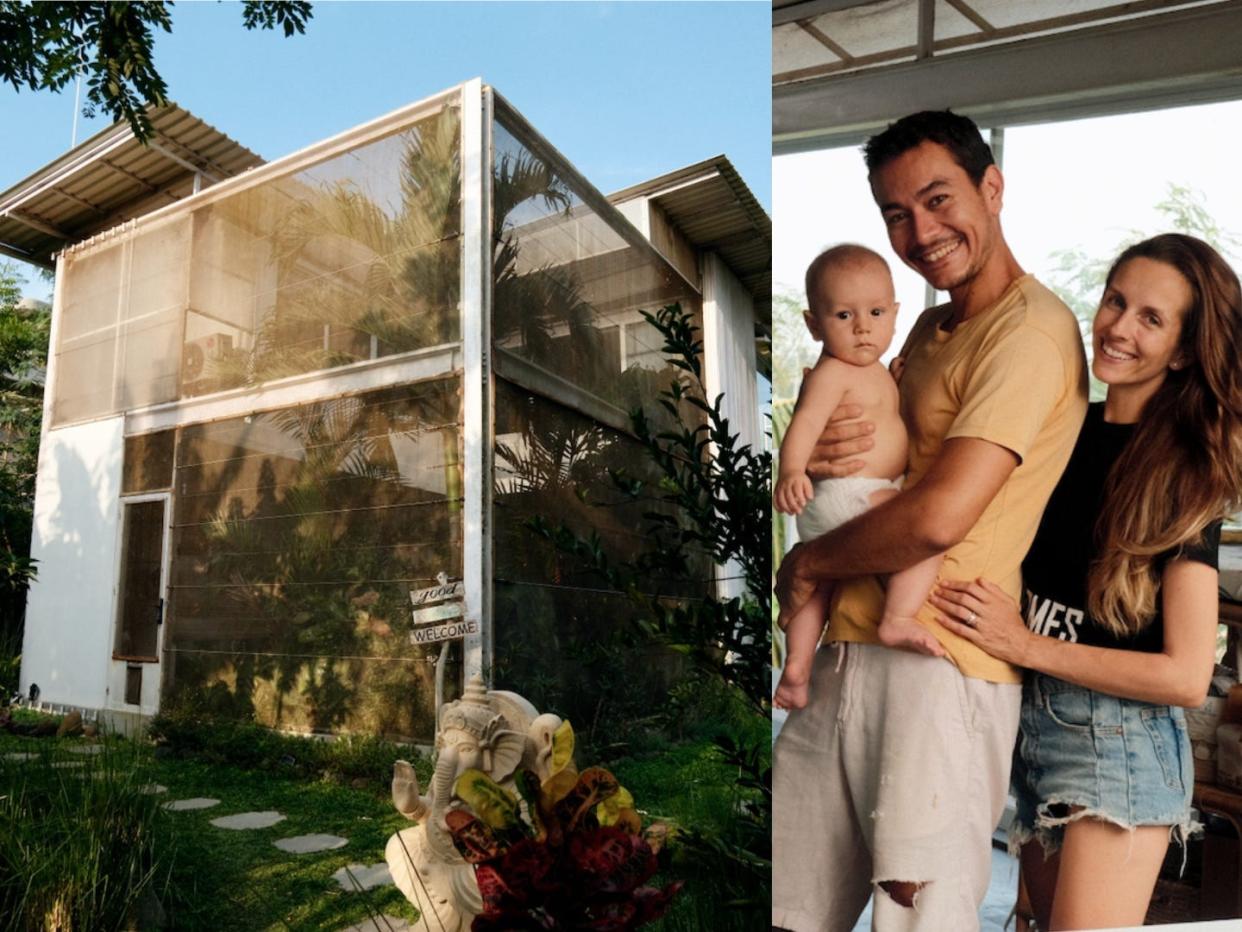
Tanguy and Lucie Yu gave up city life in Paris to move to Bali in 2019.
Their house, located amid rice paddies, took 4 months to build and has a garden indoors.
They say they are less attached to material things and want to focus on what truly matters to them in life.
Tanguy and Lucie Yu first visited Bali together in 2018 for a monthlong vacation.
That year, Lombok, a neighboring island, experienced a 6.9-magnitude earthquake that could be felt even in Bali, which was 40 minutes away by plane.
"We couldn't travel much to the other islands because the boats weren't working, so we rented motorbikes, and we did road trips to see all the different parts of the main island," Lucie, 35, told Business Insider.
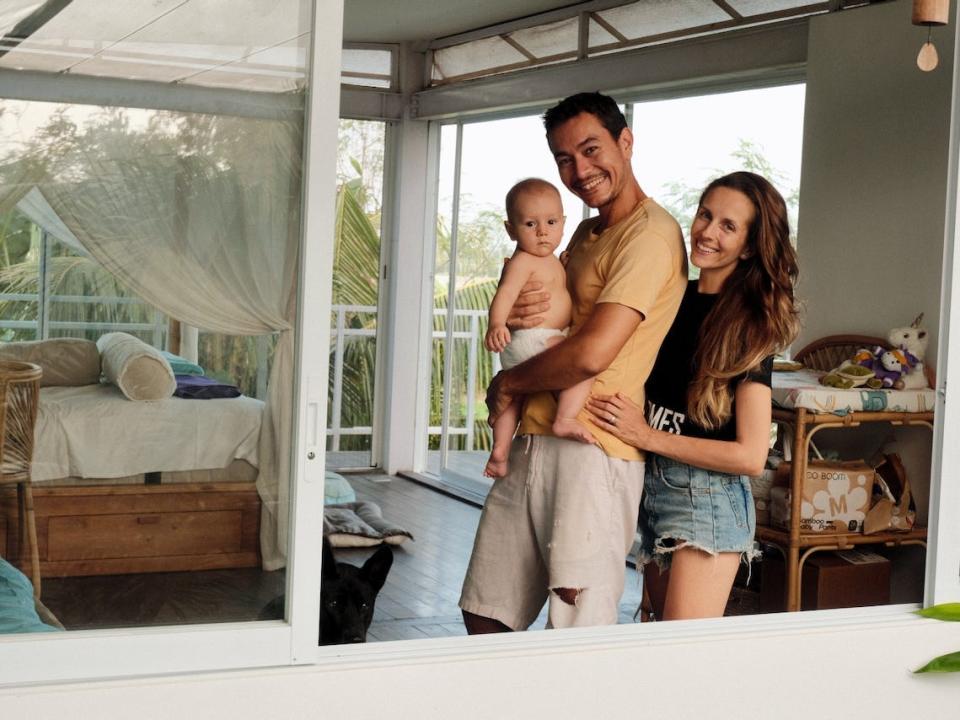
The couple, who was living in Paris at the time, was blown away by the simplicity of life on the island and the generosity of the people they met.
"Farmers whose houses were damaged by the earthquake still invited us over for coffee. They had a smile on their faces and were just happy to be alive," Lucie said. "It was a sign that this place had some magic."
A year later, in September 2019, the couple packed up their lives and moved across the globe to Bali.
Finding land
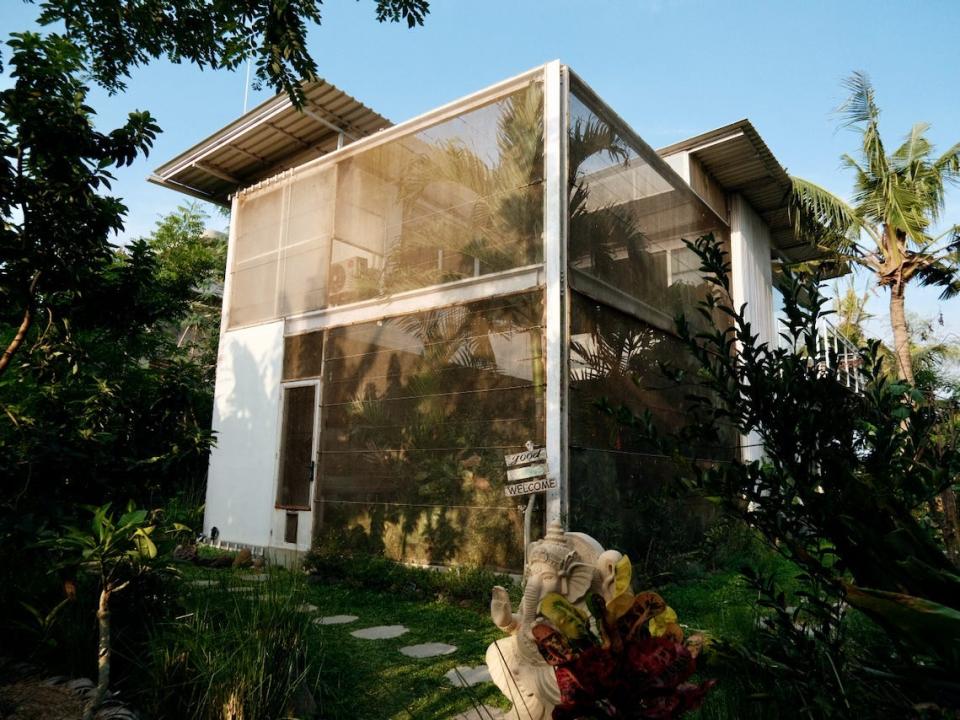
Initially, they planned to use Bali as a base to travel around Asia. But six months later, the pandemic hit and derailed their plans.
Around then, Tanguy cofounded Astungkara Way, a regenerative travel company. That spurred the couple's decision to put down more permanent roots in Bali, so they started looking for land to build on.
During their first year in Bali, the couple lived in Kerobokan, an area sandwiched between the bustling, tourist-filled neighborhoods of Canggu and Seminyak.
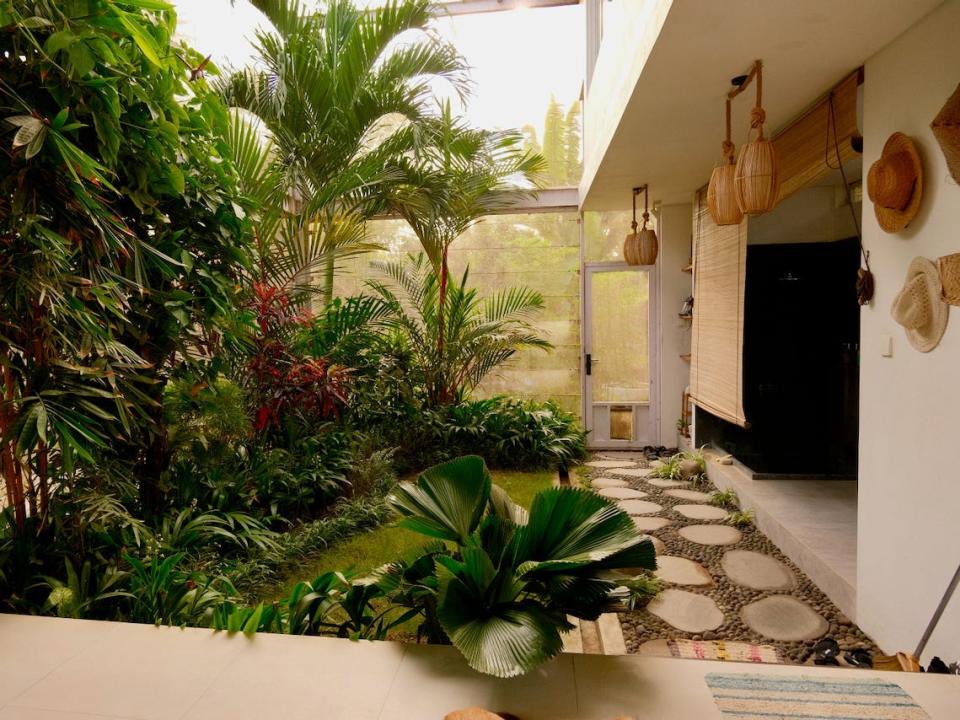
"It was very busy, very loud, and a lot of traffic," Lucie said.
They knew they wanted to be somewhere quieter, and a friend introduced them to the property 10 miles north in Kediri, where they now live.
The only criterion they had was that the land couldn't be a rice paddy since part of the travel company's mission is to protect rice paddies.
"We thought that it was too far from things like hospitals and shops. But when he took us here, and we stepped on this land, we felt this was the place we wanted to be," Lucie said.
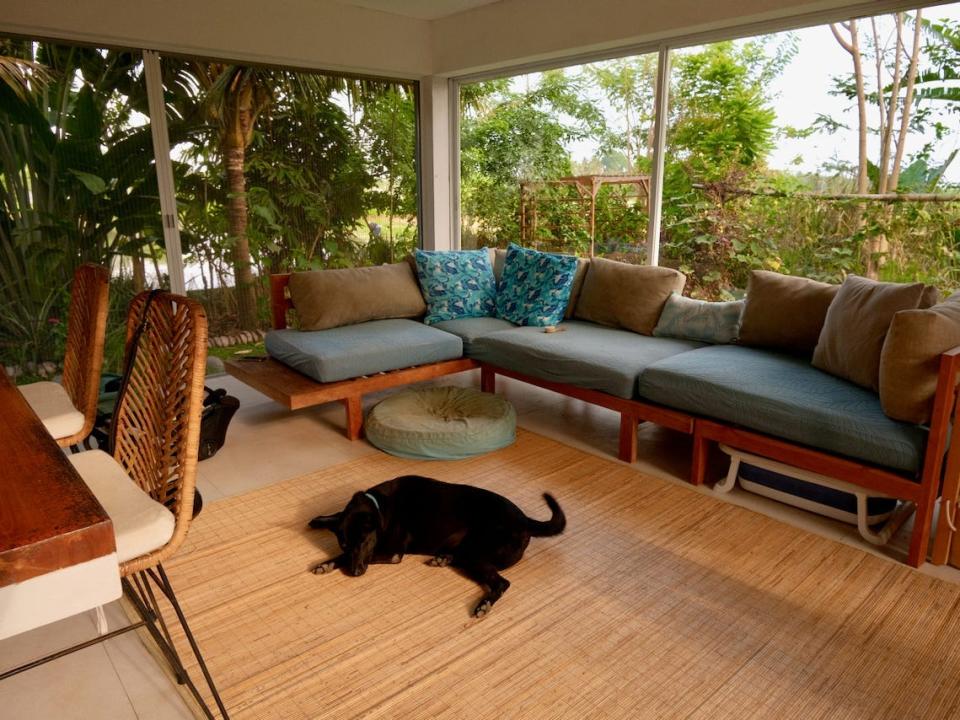
They had viewed three other plots of land before they found this.
"The land was basically the village dump and the soil was full of trash. It took us two weeks to clean everything up," Lucie said.
She added that back in 2020, there was only one local village in the area, although things have changed since.
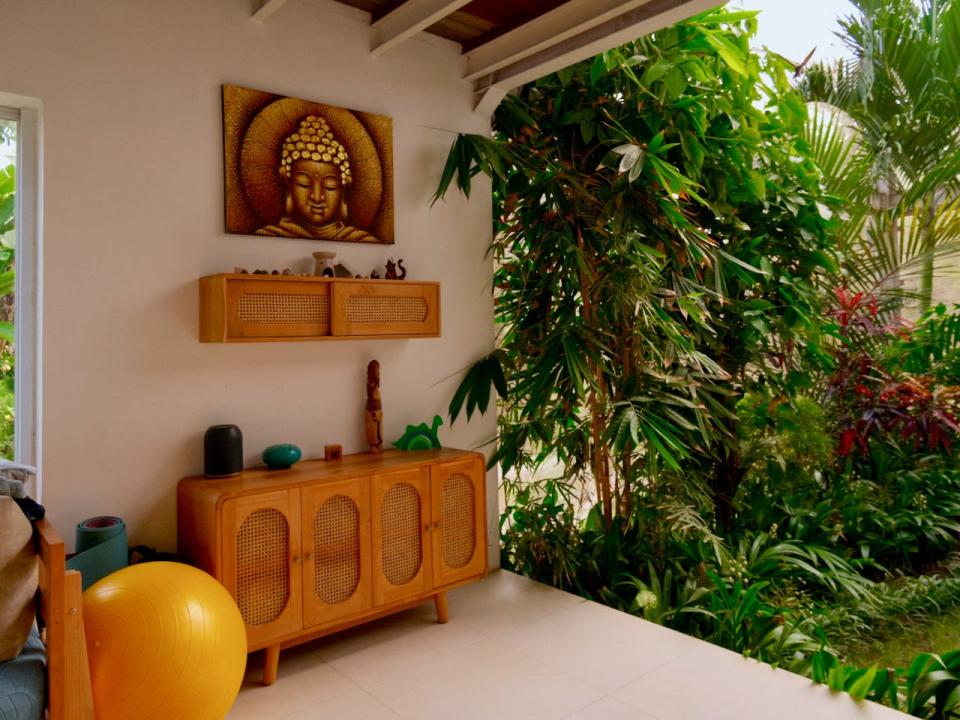
"We were like the last point before the rice paddies started and we were promised that it would stay that way," Lucie said. But two months later, a new 160-home development broke ground on the land just beyond their property.
Building a low-impact house
In local measurements, their land spans 15 are — about 16,145 square feet.
The couple says they paid 4.5 million Indonesian rupiah per are each year for a 25-year lease, which amounts to about 1.687 billion Indonesian rupiah in total, or about $103,500 in today's currency.
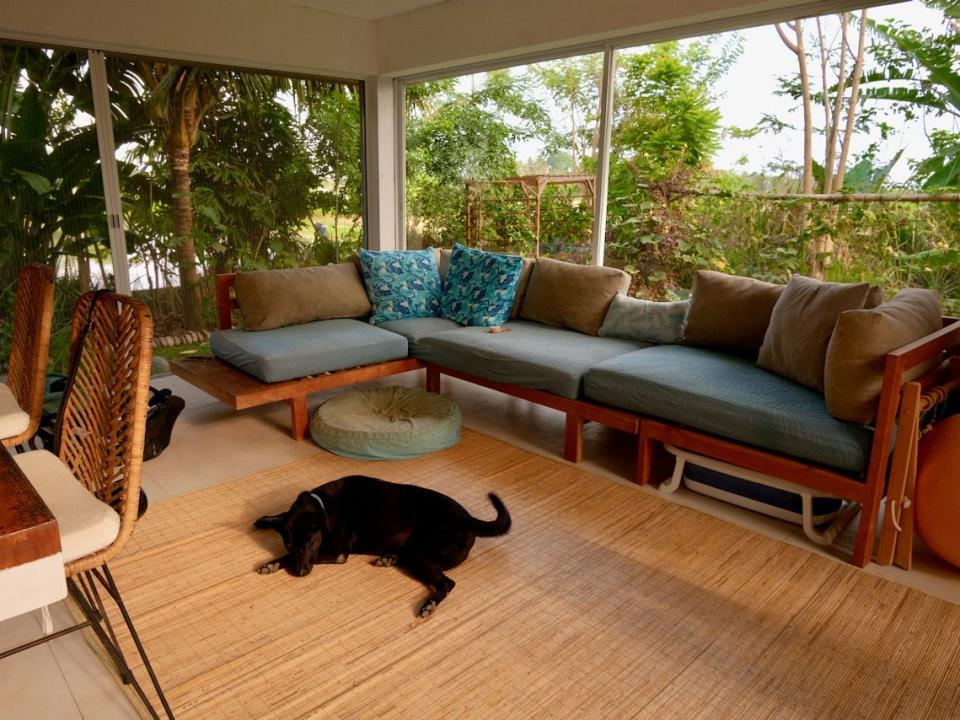
Building the home took about four months, and they estimate they spent about $70,000 on the build.
The couple's house is surrounded by their lush outdoor garden. A dirt pathway with an overhead trellis covered in creepers leads from the gate at the edge of their property to the couple's front door.
The entire front section of the house is shielded by a giant insect net — meant for greenhouses — to prevent mosquitoes from entering.
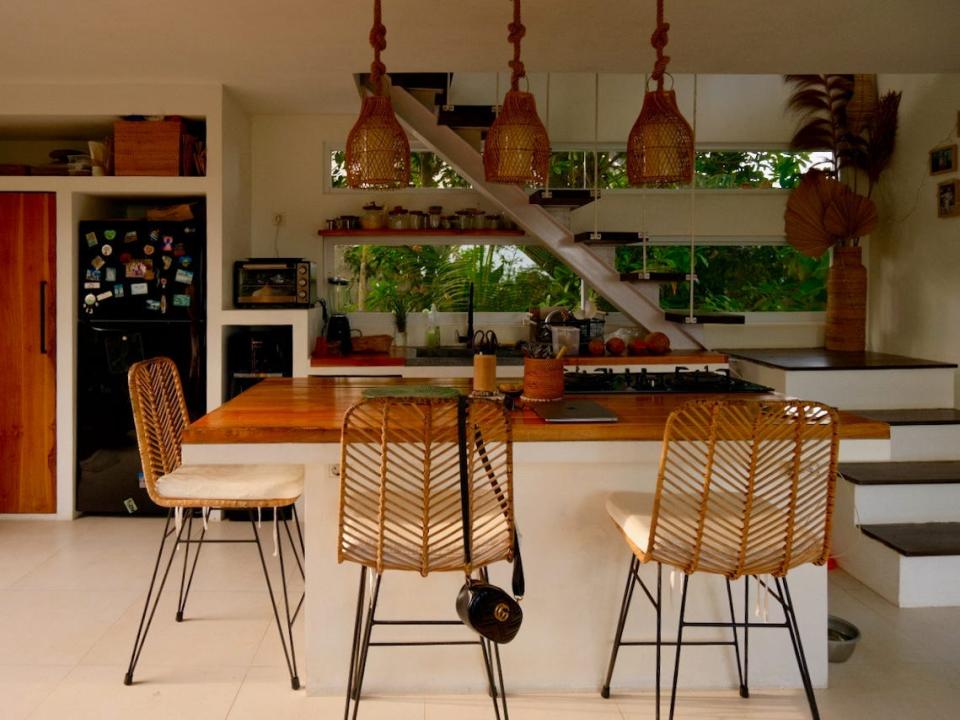
"You get sun, you get wind, you get rain in the house as well, which is really nice, but you don't get bugs," Tanguy, 40, told BI.
There's even a garden inside the house, which helps keep their home cool even without a cooling system.
The couple's home was designed and built by the late architect Tony Gwilliam, a close family friend. The inspiration behind its design was another similar building prototype that Gwilliam had constructed in the Bloo Lagoon Eco Village, a resort located along the east coast of Bali.
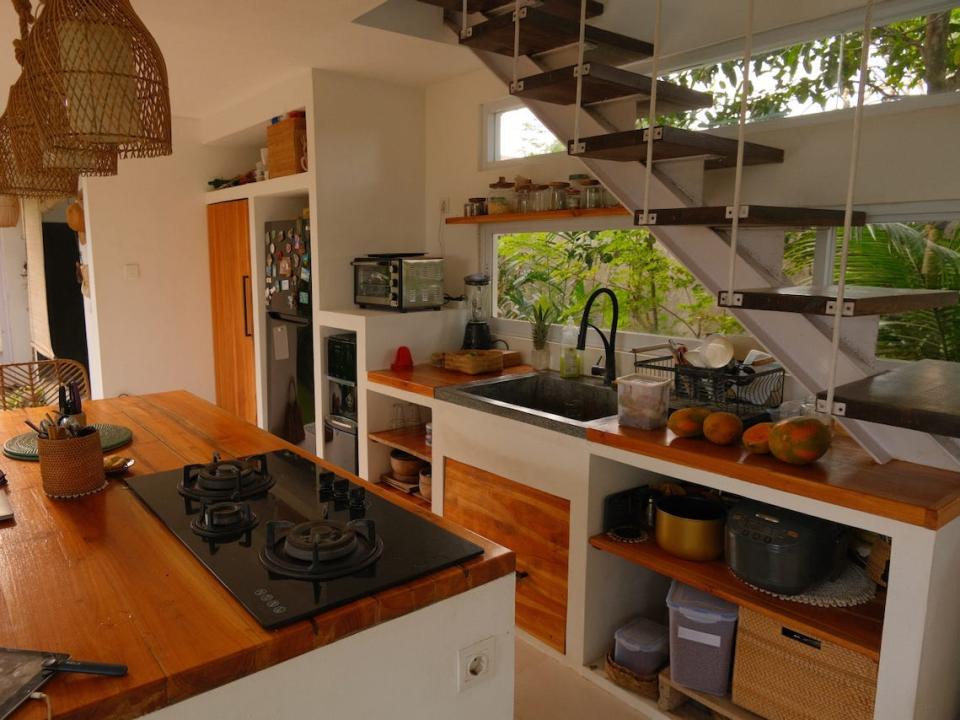
"We went for a road trip during our first week in Bali, and we stopped by the Bloo Lagoon Eco Village because we wanted to see their permaculture garden. In the middle of the garden was the first prototype of our house, and we just fell in love with its concept," Lucie said.
It was a six-meter cube made from steel, and the couple liked the idea of incorporating that material into their build.
"If you're using steel, you can have very small foundational elements," Tanguy said.

For instance, the couple's house is supported by six steel pillars and made from local brick. Because it's light, the house can also be taken down and fit in a container to be moved if required.
"It doesn't take much space, and it doesn't require many materials," Tanguy added.
As he explained, Gwilliam and the couple were inspired by architect R. Buckminster Fuller's ideas about the weight of a house, which is related to its environmental impact.
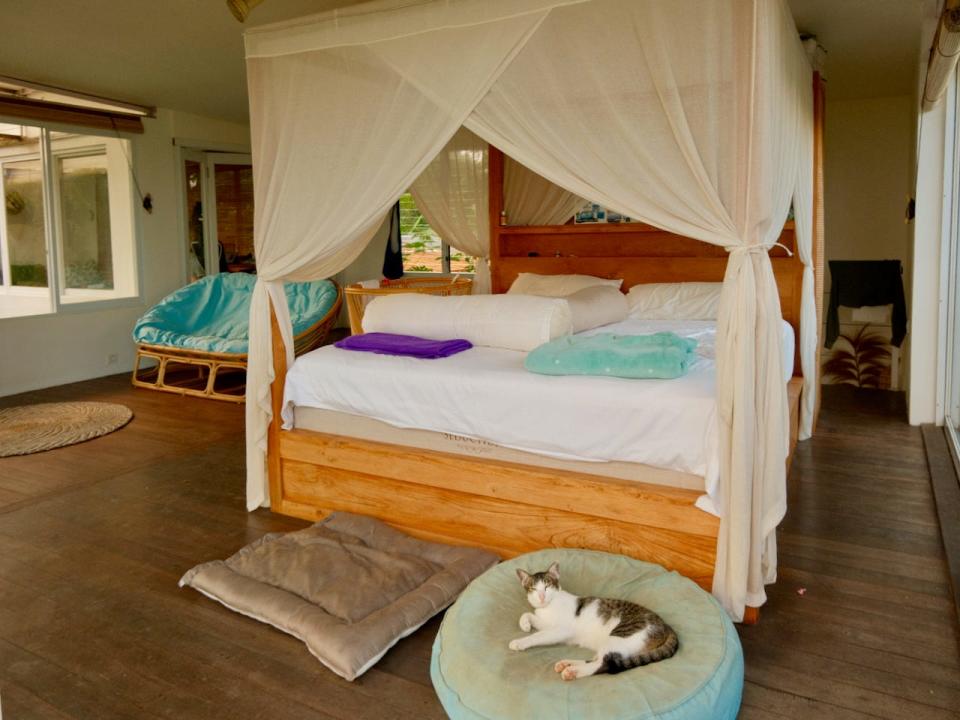
"How much material was extracted from the ground, transported, and transformed? When you have a big concrete villa, the impact of those is colossal," Tanguy said.
Even the home's interiors are fairly minimal, with each piece of furniture designed by the couple and made by local craftsmen.
"Maybe we're getting older, we're less attached — and this is also what the idea of coming here was about, to be less attached to material things and more attached to how we feel, how we live, how we are as a couple, as parents, and just focusing more on life," he said.
Now, even with an infant son in tow, they have a slower pace of life.
Every day, they spend time as a family and walk their three dogs along the beach, which is less than 10 minutes away on foot. The couple also has two cats, and they rear chickens and grow their own produce in the garden.
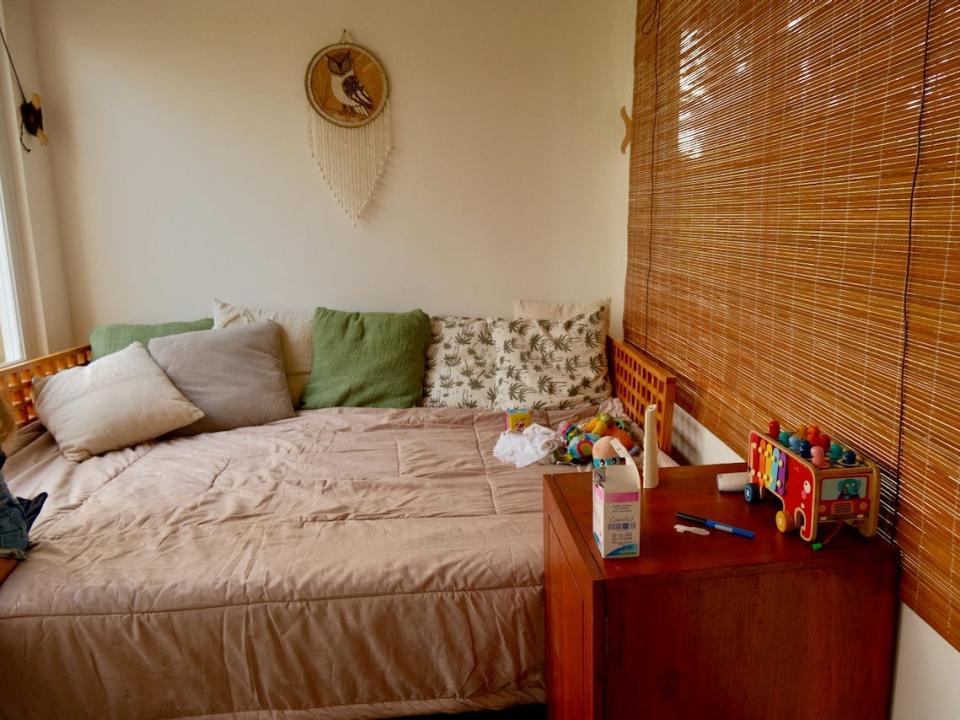
"The only thing that we didn't think about when we were creating the house was that we were going to have a baby, so it's not very baby-proof," Lucie added.
That said, the layout can be easily adjusted because of the house's design and materials.
"If we want to add two more rooms, we can still do it within the space," she said. "We can improve it as we grow according to our needs."
Be part of the solution, not the problem
Tanguy acknowledges that mass tourism has greatly impacted Bali and its natural ecosystems. He points to the island's ongoing water crisis and the destruction of Bali's natural landscapes for materials as examples.
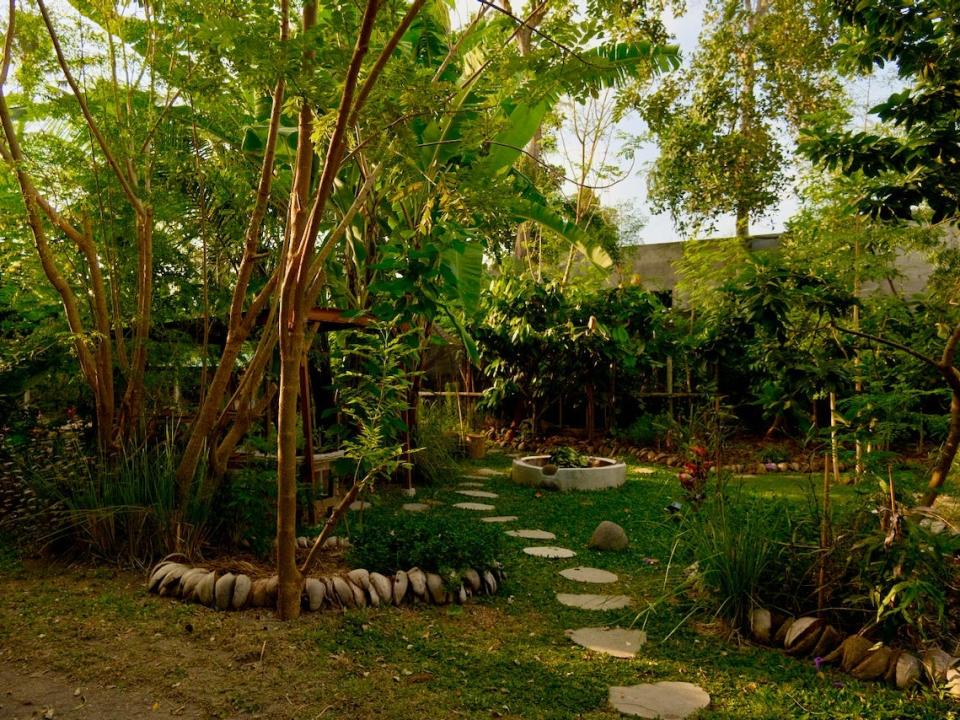
"I think people should move here if they want to contribute, but if they are here to just extract value from the people, from unregulated resource management, then they should reconsider," Tanguy said. "It's a pretty fragile part of the world."
He added that there are plenty of eco-tourism alternatives that are now available on the island.
"There are a lot of hotels that are trying to do better, who are growing their own food, doing wastewater treatment or sourcing their food locally," Tanguy said. "If you come to Bali, go there and support. The same thing for restaurants."
"Make sure to be part of the solution," he added.
Have you recently built or renovated your dream home? If you've got a story to share, get in touch with me at agoh@businessinsider.com.
Read the original article on Business Insider

 Yahoo News
Yahoo News 
